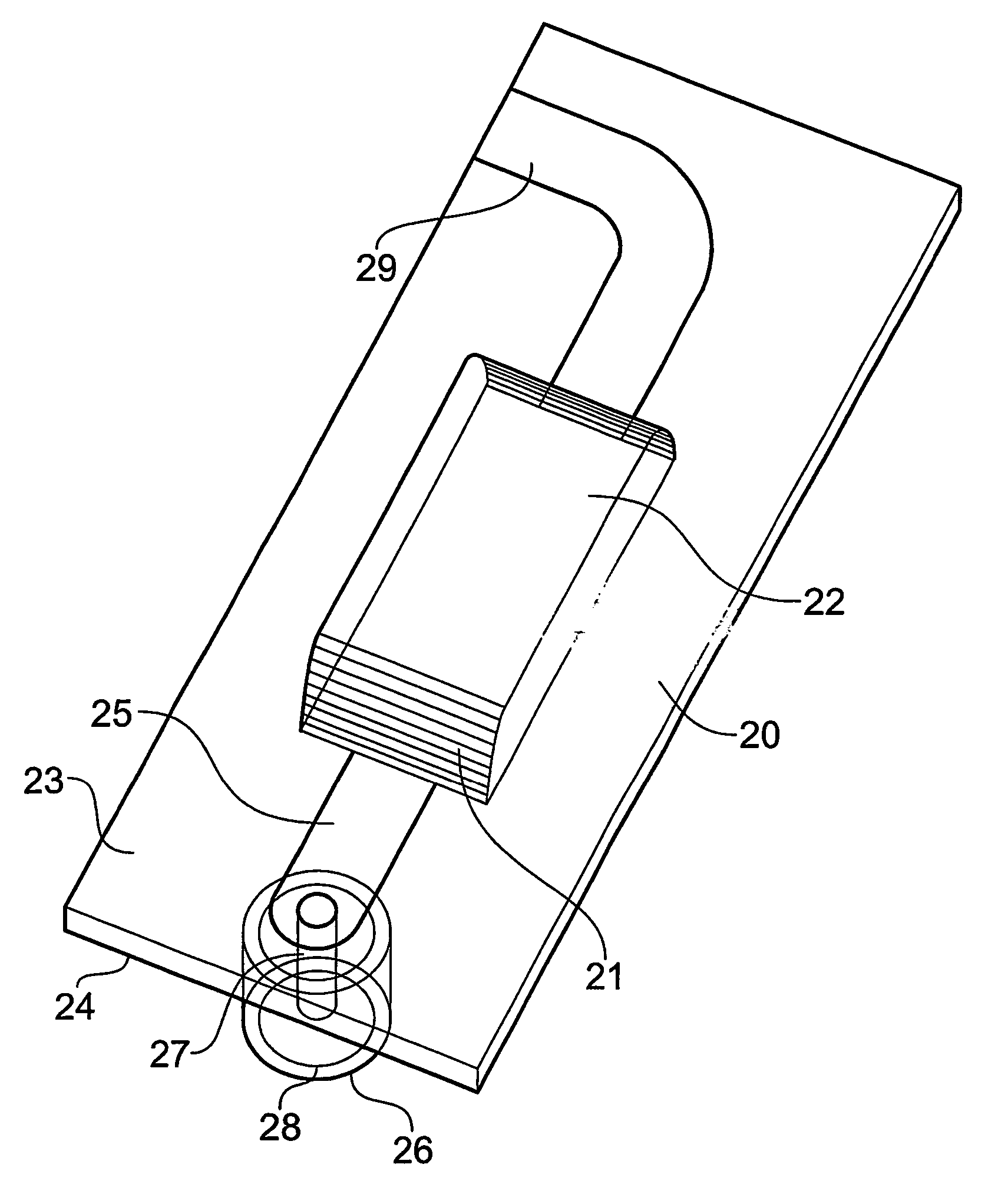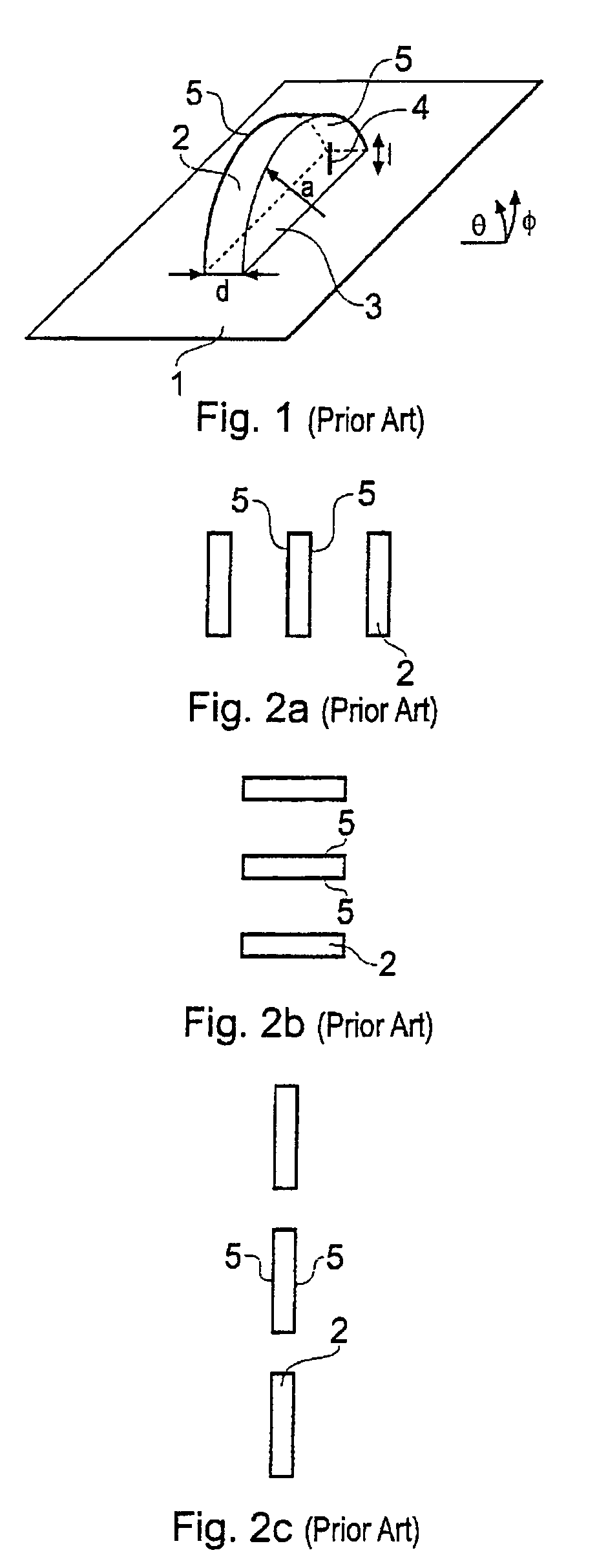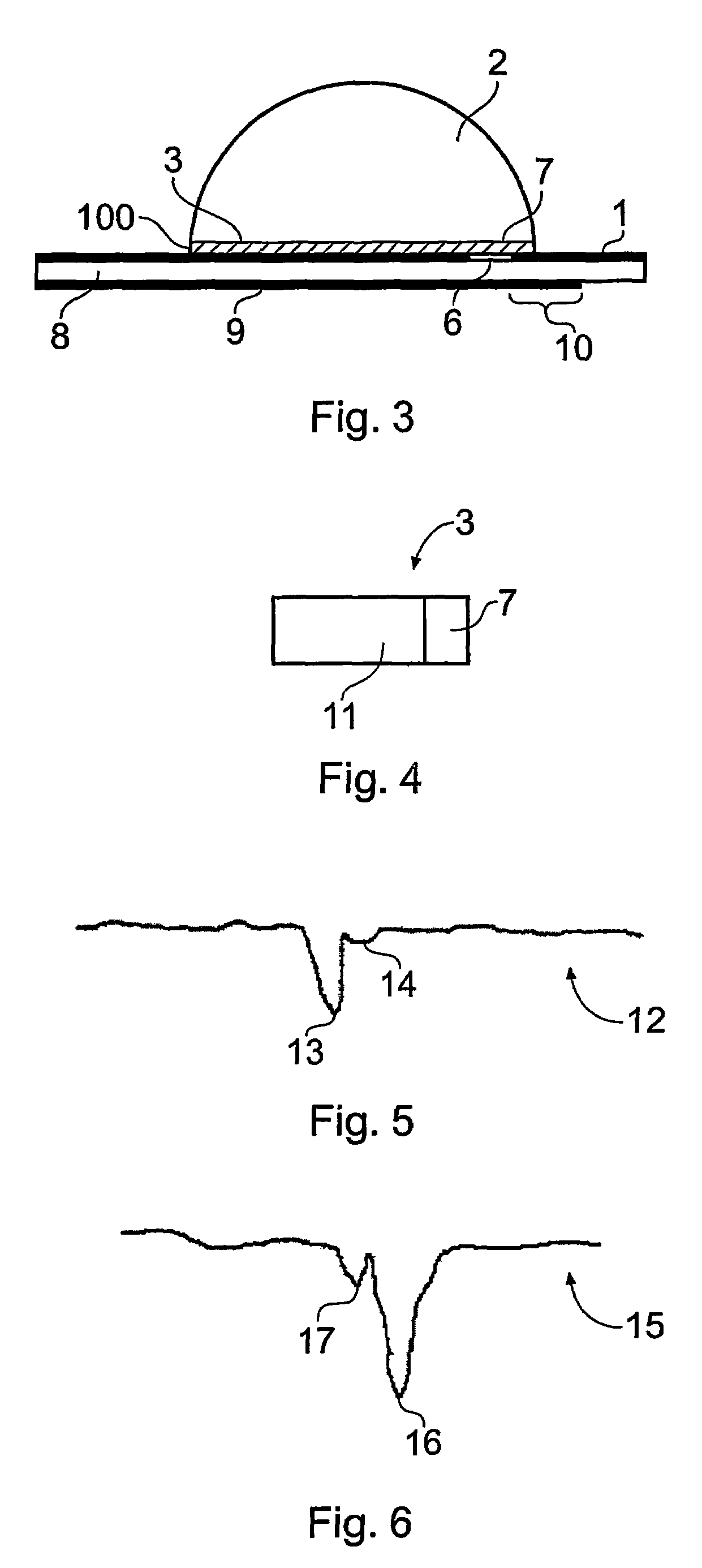Dielectric resonator antenna
a dielectric resonator and antenna technology, applied in slot antennas, antennas, electrical equipment, etc., can solve the problems of difficult mode excitation, high dielectric materials to be used, antennas being too small in bandwidth, etc., to achieve good azimuth coverage, good control of radiation pattern, and high gain
- Summary
- Abstract
- Description
- Claims
- Application Information
AI Technical Summary
Benefits of technology
Problems solved by technology
Method used
Image
Examples
Embodiment Construction
[0059]FIGS. 1, 2a, 2b and 2c have been discussed in the introduction to the present application.
[0060]FIG. 3 shows a preferred DRA of the present invention comprising a grounded conductive substrate 1 over which is disposed a half-split cylindrical ceramic dielectric resonator 2 having a longitudinal rectangular surface 3 disposed just over the grounded substrate 1. The grounded dielectric substrate 1 includes a slot 6 formed therein, the slot 6 extending longitudinally in a direction substantially perpendicular to the orientation of the longitudinal surface 3 of the resonator 2, with one end 7 of the longitudinal surface 3 positioned over the slot 6. The grounded substrate 1 is disposed on a first side of a dielectric substrate 8, which may be a printed circuit board (PCB). A microstrip feed line 9 is provided on a second side of the dielectric substrate 8, the feed line 9 being substantially coextensive with the longitudinal surface 3 of the resonator 2 and extending slightly beyo...
PUM
 Login to View More
Login to View More Abstract
Description
Claims
Application Information
 Login to View More
Login to View More - R&D
- Intellectual Property
- Life Sciences
- Materials
- Tech Scout
- Unparalleled Data Quality
- Higher Quality Content
- 60% Fewer Hallucinations
Browse by: Latest US Patents, China's latest patents, Technical Efficacy Thesaurus, Application Domain, Technology Topic, Popular Technical Reports.
© 2025 PatSnap. All rights reserved.Legal|Privacy policy|Modern Slavery Act Transparency Statement|Sitemap|About US| Contact US: help@patsnap.com



